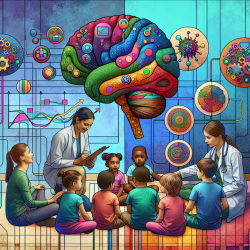Introduction
In the world of speech-language pathology, data-driven decisions are crucial for improving outcomes. While the research on citrus gene coexpression networks might seem unrelated at first glance, the methodologies and insights from this study can offer valuable lessons for practitioners aiming to enhance their skills and outcomes. Let's explore how the construction of citrus gene coexpression networks using random matrix theory can inspire innovative approaches in our field.
Understanding Gene Coexpression Networks
The study, "Construction of citrus gene coexpression networks from microarray data using random matrix theory," provides a framework for understanding how genes interact and function together. In this research, 230 sweet orange microarrays were analyzed to construct coexpression networks, which were then partitioned into functional modules using the Markov Cluster Algorithm. These networks revealed significant insights into gene interactions, offering a new perspective on gene function annotation.
Applications in Speech-Language Pathology
While the study focuses on citrus, the concept of coexpression networks can be applied to speech-language pathology. Here are some ways practitioners can leverage these insights:
- Data Integration: Just as gene networks integrate vast amounts of genetic data, speech-language pathologists can integrate diverse data sources (e.g., assessments, therapy outcomes) to create comprehensive profiles of their clients.
- Identifying Patterns: By identifying patterns in coexpression networks, researchers can predict gene functions. Similarly, practitioners can identify patterns in speech and language development to predict potential challenges and tailor interventions accordingly.
- Collaborative Networks: The study highlights the importance of collaborative networks. Speech-language pathologists can benefit from collaborating with other professionals (e.g., educators, psychologists) to create a holistic approach to client care.
Encouraging Further Research
The study underscores the importance of continuous research and innovation. Speech-language pathologists are encouraged to delve deeper into coexpression networks and explore how these concepts can be adapted to their practice. By staying informed about advancements in related fields, practitioners can enhance their methodologies and improve client outcomes.
Conclusion
The construction of citrus gene coexpression networks offers a compelling example of how data-driven approaches can lead to significant insights and improvements. By adopting similar strategies in speech-language pathology, practitioners can unlock new possibilities for enhancing client care. To read the original research paper, please follow this Construction of citrus gene coexpression networks from microarray data using random matrix theory.










